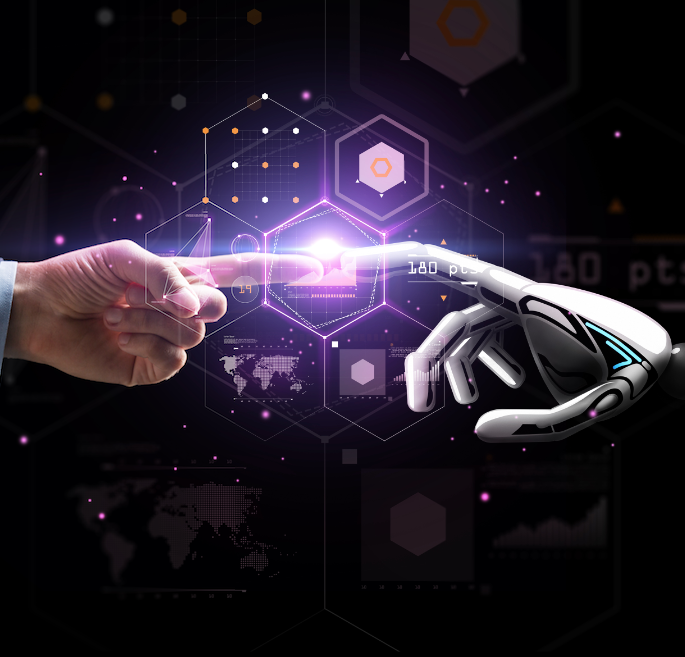
In China, there are robots working as waiters and policemen at the airport. There are banks that are fully managed by bots and droids that mother children in Beijing. BeanQ, the technological babysitter, asks the children questions like “Have you eaten? Are you tired? How do you feel?” Thanks to its artificial intelligence system, this babysitting android– which costs less than 300 euro and is revolutionizing the educational system in China – provides a substitute for busy moms. Does this scare you?
At the next Olympic Games, Tokyo 2020, many tourists will find a robot sitting in the taxi driver’s seat. It will be doing the driving. Tourists will arrive at their destinations thanks to vehicles governed by a system of millimetric radar sensors, high-definition stereo cameras and GPS. And many hotels will be managed by androids, too. Waiters and bellboys will be replaced by robots speaking four languages. Check-in procedures will be conducted via biometric recognition systems, eliminating the need for IDs and manual registration.
The idea that robots can help humans complete their tasks reaches very far back. At the beginning of the twentieth century, robots were perceived as a threat to humanity. They were made of organic matter, rebelled against mankind and exterminated the human race. Science fiction writer Isaac Asimov was the first to portray robots not only as useful tools, but also as devices with social competences, personalities, and the ability to learn and interact with humans in a wide range of contexts. Indeed, over the past few decades, robotics has developed tools that can help us in our daily tasks and robots have already replaced waiters and shop assistants in India and Japan. However, the main focus of robotics has shifted to models and prototypes running applications for assisting the elderly, pre-school learning and the treatment of autistic spectrum disorders. In Japan, robots are being used to help patients get out of bed and train stroke victims to regain control of their limbs.
A robot that works with us (or for us) at home, in a hospital or at school is not the same as an automated mechanical device in a factory. It must be capable of comprehending the complicated model of social signals that characterizes mankind but distinguishes each individual. And these signals vary in different contexts and different cultures. It is hard to quantify and replace these interactions with simple models. And this complexity is what is driving research on social robotics towards artificial intelligence – especially machine learning – and engineering and aiming to forge this with the competences of medicine, psychology, neuroscience, social sciences and linguistics.
The recent Las Vegas Consumer Electronics Show provided us with a glimpse into what our roads will look like in the coming decade. Many leading high-tech companies – such as Bosch, but also ZF, Continental and Schaeffler – showcased a new type of vehicle: an autonomous mini-bus. There will be 2.5 million electric self-driving shared mini-buses on our roads by 2025 that can be booked via a smartphone app. Indeed, smartphones will be used to control just about everything in the future. They will be used to open and start cars, as well as to allow them to park independently, to control drones and to activate trolley-robots, suitcases that will automatically follow us around airports, without our having to hold on to them.
Industrial Applications
Material goods are increasingly produced by intelligent machines. Robots already operate in precision agriculture to keep weeds under check and monitor harvests. Assembly lines employ small, easily programmable robots that operate much more rapidly than human beings. In fact, experts posit that this trend will provide mankind not only with more time to come up with new ideas, but also with more energy to distribute products, provide services and develop and circulate ideas.
In enterprise, robotics is one of the main trends that we will have to address in the coming years. From 2016 to 2019, according to a report published by the International Robotics Federation (IFR), over 1.4 million new industrial robots will be installed in factories around the world. Millions of low cognitive-content jobs will disappear in the near future. The men and women performing these tasks will be replaced by robots, probably cloud-based devices that will learn from experience.
The key word here is “robotics.” Professor Michael Brady, founder of the “Robotics Research Group” at Oxford University, defines this field as the “intelligent connection between perception and action.” In other words, robots are devices that employ sensors to gather information and react intelligently to a context to reach a specific objective.
The introduction of robots, together with IoT technology, intelligent machines and augmented reality, is profoundly changing the labour market and especially the manufacturing industry. Robots have been designed to collaborate side-by-side with humans in industrial production: not only do they perform all the repetitive, difficult and toilsome tasks, but they also reduce costs while increasing production. These are the classic automatic mechanical arms controlled by software that characterise industrial plants, especially in the automotive industry. In fact, there currently are 1.3 million industrial robots in the world.
Recent Eurostat data on industrial automation reveals that, in 2018, Italy has stepped up the use of industrial and service robots: 9% of Italian enterprises employ robots. Italy ranks third in Europe, following Spain (11%) and Denmark and Finland (10%). The robotic revolution in European industry is being driven by industry. In fact, robots are employed by 25% of large enterprises (more than 250 employees), 12% of medium-sized enterprises (50-249 employees) and 5% of small companies (10-49 employees).